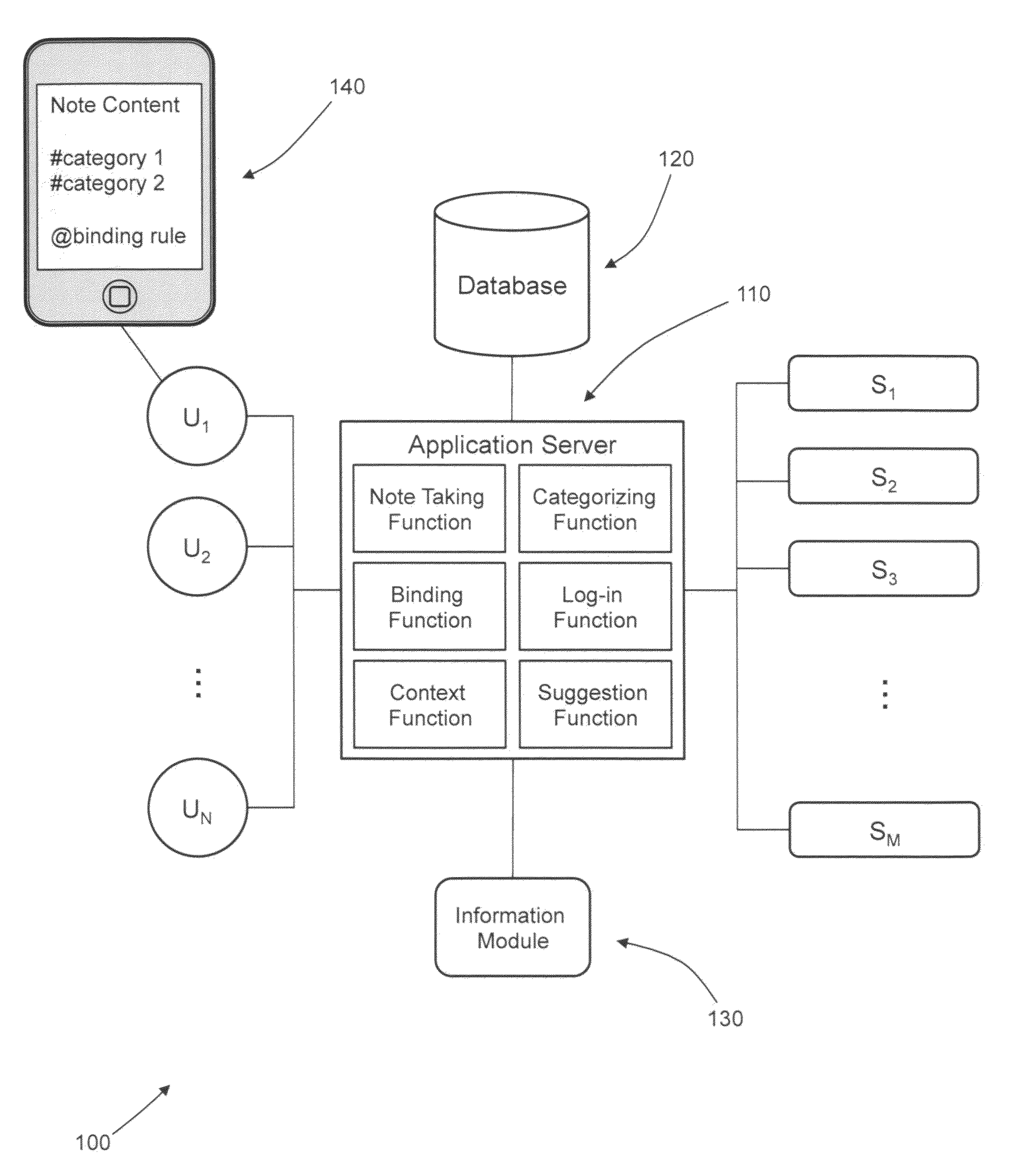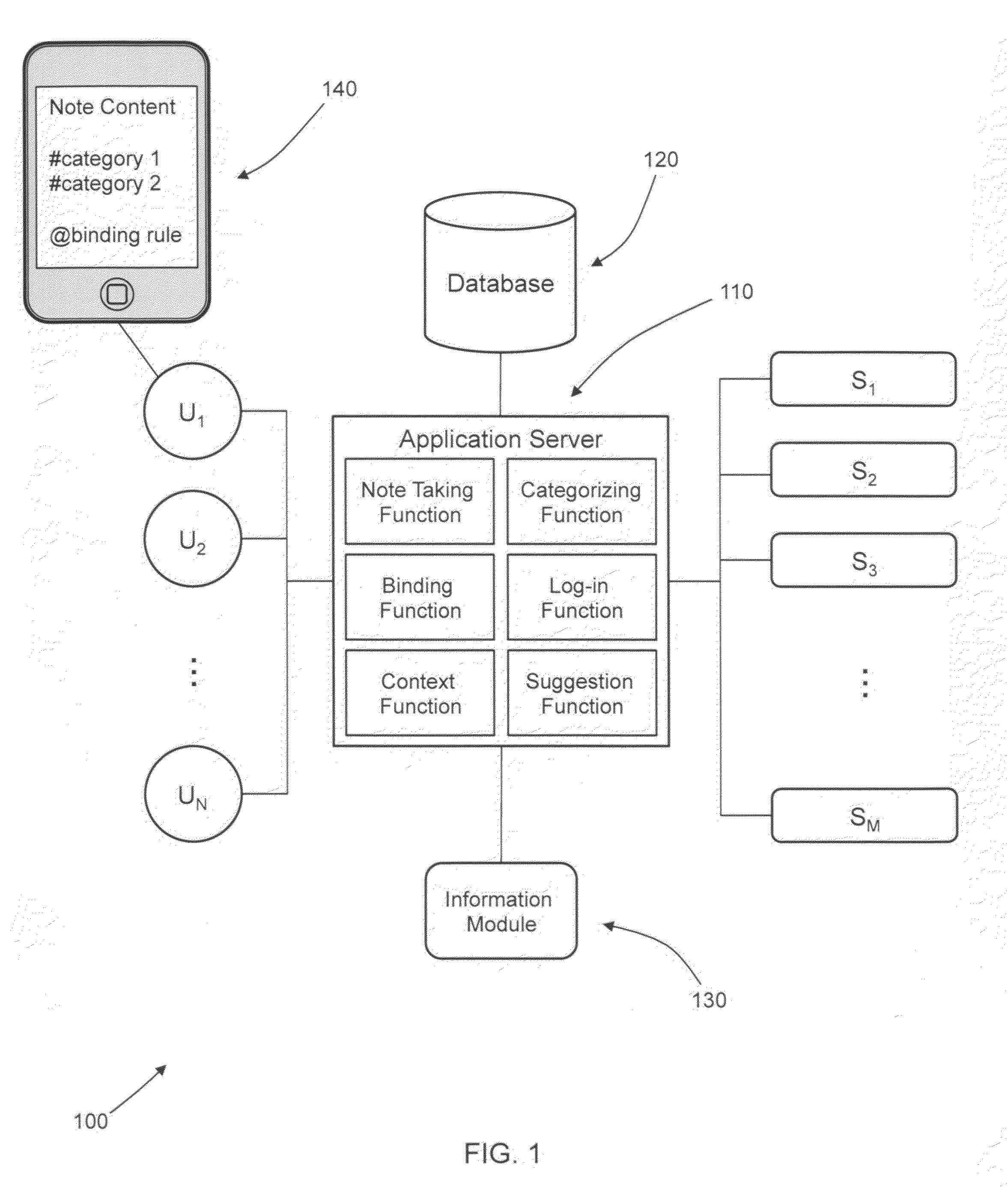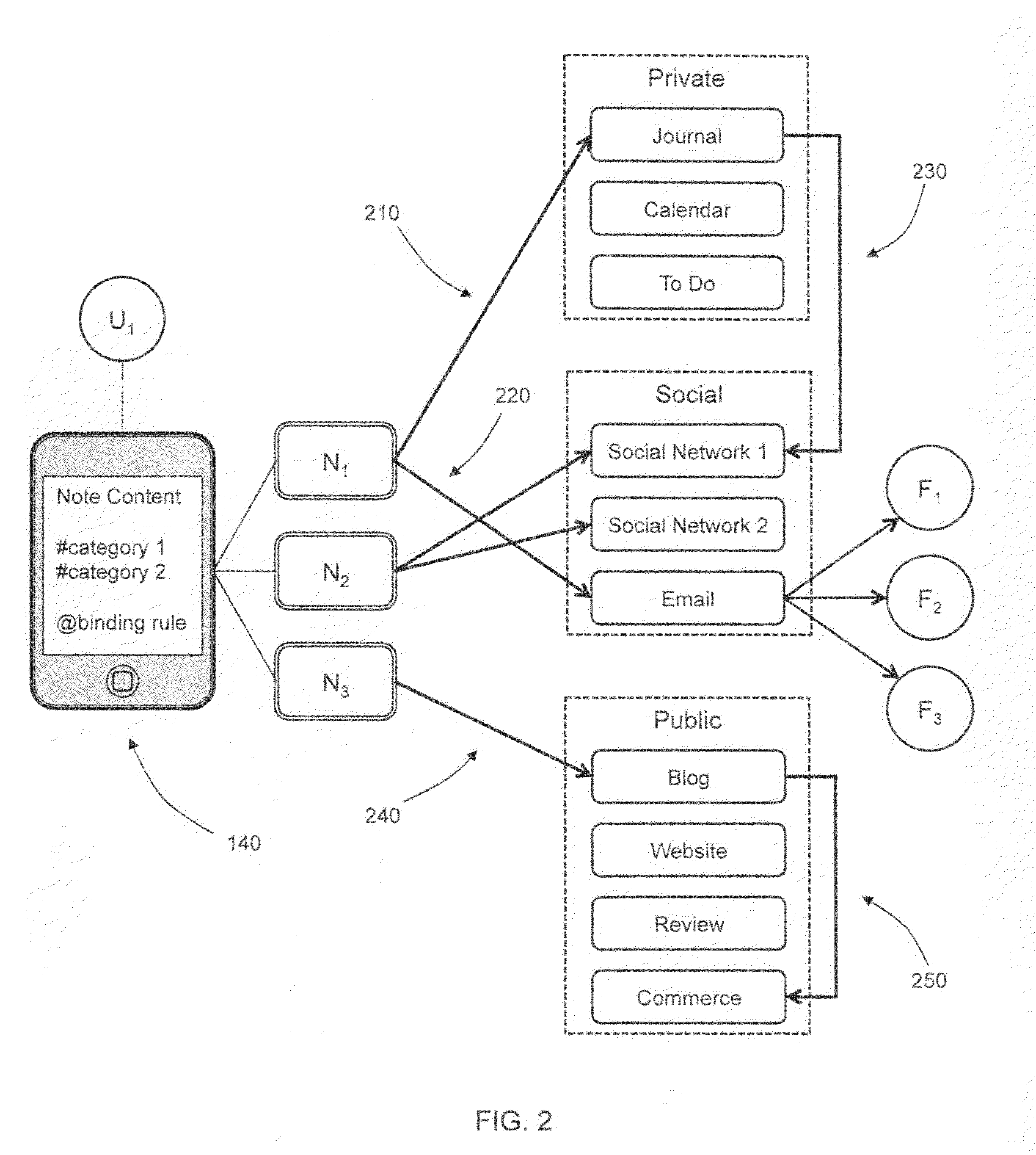Context-aware prompts and alerts in a note-sharing system
a note-sharing and context-aware technology, applied in the field of online social media, can solve the problems of information overload, cumbersome services, and inability to respond to users' requests in time, and achieve the effects of reducing the number of users, and increasing the number of users
- Summary
- Abstract
- Description
- Claims
- Application Information
AI Technical Summary
Benefits of technology
Problems solved by technology
Method used
Image
Examples
example 3
Health
[0063]Embodiment of the invention can be directed to a dietary, health, or medical service. For example, with minimal friction, a user can submit his or her dietary behavior to be tracked by a diet service. In another example, medical information can be collected at a hospital visit or doctor's appointment and submitted to an electronic medical record (EMR) application.
example 4
Research
[0064]The semantic note taking system can also be applied to a research study. In an embodiment of the invention, research data is collected in a note. The research data can be collected from the field via a mobile device. The research data is enriched with time and location context traits. For repetitive data collection, a semantic skin would provide simple one click user entry of data. For example, embodiments of the invention can facilitate frictionless data gathering from door-to-door surveys. A door-to-door surveyor would need not enter the address of each participant of the survey as location context traits would be automatically associated with the note. Relevant data (e.g. resident names and demographics) can be automatically accessed based on the location context traits.
Semantic Note Enriching Through Search
[0065]The following description relates to semantic note enriching using web or network queries (FIGS. 13-15). One or more user intentions are associated with on...
example 1
Exercise
[0067]The intention of the user is “Calories burned”. The input from the user to a computer or mobile device can be a start and stop time during a physical exercise. The contextual data from the device that can be associated with the user's intent and input is for example a GPS trace, an accelerometer trace, a user identity, or data from a heart rate monitor, a blood pressure device, a temperature sensor, or the like.
[0068]A search query for rules (or functions) associating calories is performed with data that is currently available. An example of a search for a rule could be that if the intention is to know calories burned and the data one has is a gps trace, the search query could then be for calories burned rules. An example of a result of the (computer or web) query for that rule could be:
http: / / walking.about.com / library / cal / uccalcl.htm where calories=function (miles, exercise type, weight).
[0069]Now assume that no rule exist and that all rules with required accuracy lev...
PUM
 Login to View More
Login to View More Abstract
Description
Claims
Application Information
 Login to View More
Login to View More - R&D
- Intellectual Property
- Life Sciences
- Materials
- Tech Scout
- Unparalleled Data Quality
- Higher Quality Content
- 60% Fewer Hallucinations
Browse by: Latest US Patents, China's latest patents, Technical Efficacy Thesaurus, Application Domain, Technology Topic, Popular Technical Reports.
© 2025 PatSnap. All rights reserved.Legal|Privacy policy|Modern Slavery Act Transparency Statement|Sitemap|About US| Contact US: help@patsnap.com



